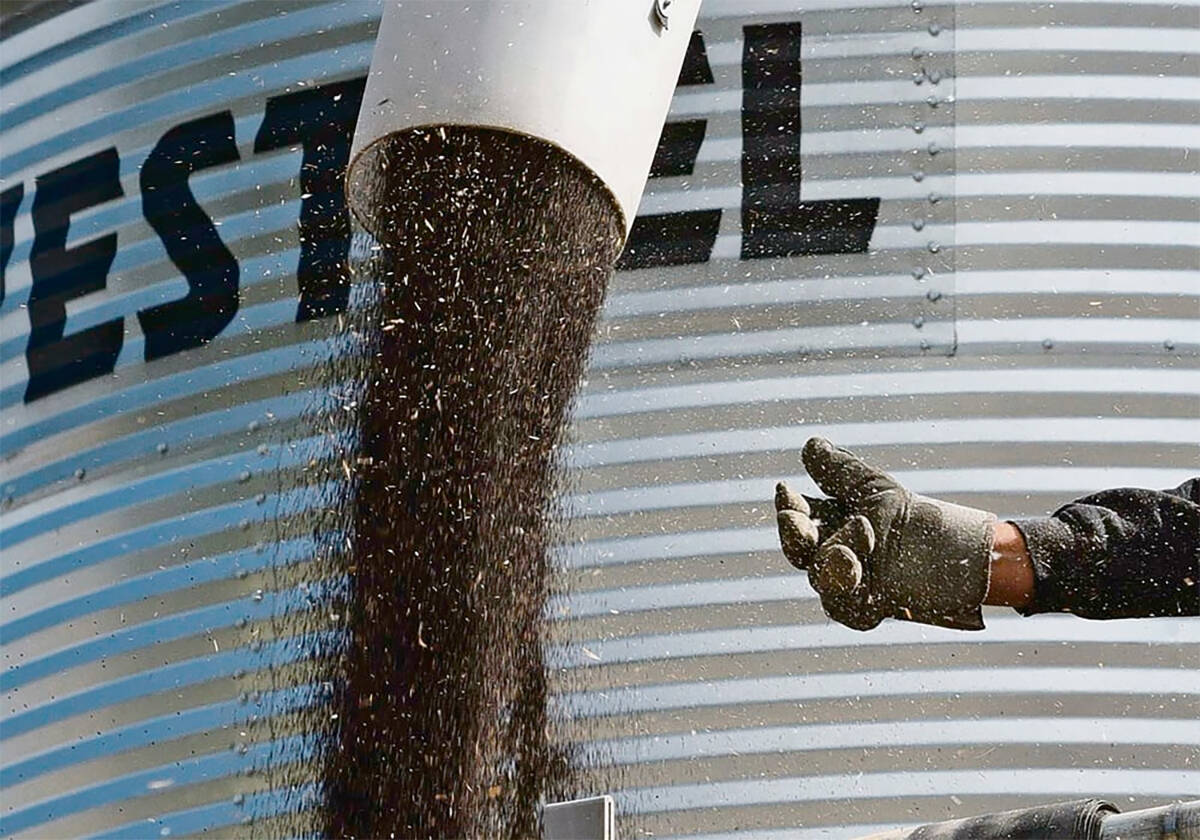Mapping genome | Identifying traits that increase tolerance to infection can help determine best breeding combinations
LINDELL BEACH, B.C. — Scientists have discovered genetic resistance to a parasite nematode that infects sheep.
Researchers from the U.S. Department of Agriculture and the International Livestock Research Institute (ILRI) in Kenya detected quantitative trait loci (QTL) genetic locations on chromosomes for resistance to gastrointestinal nematode parasites while studying a double-backcross population of African native sheep.
The parasites are common in tropical regions and cause significant economic and production losses every year. Infected sheep can suffer from diarrhea, anemia, weight loss, bottle jaw and sometimes death.
Read Also

Farmers urged to be grain-safe this fall
Working around grain bins comes with risk, from farmers falling to drowning in grain: Experts have five tips to help avoid grain-related accidents this harvest.
According to the USDA, researchers mapped the regions of the genome that control resistance to gastrointestinal nematode parasites in a sheep population bred by ILRI and comprising two breeds.
One was Red Maasai, which was tolerant of the parasite, and the other was Dorper, which was susceptible to it.
“There is a noticeable difference on average between certain breeds raised in a similar environment,” said USDA geneticist Tad Sonstegard.
“This difference is especially noticeable in more humid, tropical regions between locally adapted sheep and introduced, non-native breeds from more temperate climates.
“This difference between breeds to parasite challenge in tropical regions can also be observed in cattle and goats. One could hypothesize that the difference is due to years of natural selection of locally adapted livestock because at several times long ago they were also introduced through human trading from the domestication centres.
“Crossbreeding is a short-term solution to improve production and resist parasitic disease in tropical regions however this is not a sustainable solution.”
The red stomach worm, also known as the wire worm or barber’s pole worm, is a common parasite to ruminant animals. Adult worms feed on the blood, and females may lay more than 10,000 eggs a day, which are then expelled from the animal through feces.
After hatching, the larvae molt several times and become infectious to animals when they graze on grass. Once ingested into the stomach, they start the process all over again.
The infection in sheep, called Haemonchosis after the parasite’s scientific name Haemonchus contortus, causes significant economic losses for farmers around the world, especially those in warm, humid climates.
Anthelminthics are used as a deterrent, but the parasites are developing a resistance against these chemicals. Selecting animals in a breeding program that are more tolerant of infection may be a solution.
Researchers started the breeding program 10 years ago to create a resource population for mapping regions of the sheep genome that control resistance to the G1 nematode.
“We created a population where we had the grandparents that were either purebred Dorper sheep or purebred Red Maasai,” said Sonstegard. “Six hybrid rams were bred to either Red Maasai ewes or Dorper ewes. The resulting progeny were either three-quarter Red Maasai or three-quarter Dorper. That’s the double-backcross.”
They then selected 10 percent of the animals exhibiting the worst of the traits and 10 percent of those showing the best resistance against parasites. From them they genotyped those animals and looked at the QTL within the families using an analysis that would look for how it was segregating in the sire clan.
Researchers were looking for what was inherited from a sire to clarify what was providing a better resistance to the parasite. Blood packed-cell volume and fecal egg count, which are indicators of parasites, were collected for three months from more than 1,060 lambs that grazed on parasite-infected pastures.
The scientists selected lambs for genotyping based on parasite indicators. They detected significant QTL for average fecal egg count and packed-cell volume on chromosomes 3, 6, 14 and 22.
Studies are continuing and focusing on genotyping the same animals using the OvineSNP50.
“With the SNP chip analysis, we can examine 40,000 to 50,000 markers instead of (just) 200,” said Sonstegard. “We are analyzing the same animals using this genotyping platform, which should give a much higher resolution map of the locations affecting parasite tolerance. We would hope to use this information to compare to other African sheep breeds to find common signatures of natural selection in the genome between breeds. These are the regions that can then be tracked using SNP tools during development of new synthetic breeds that are sustainable in the typical extensive production conditions of a nation with a developing economy.”
The aim is to identify some of the genes that can increase tolerance to parasite infection or assess the best genetic combination of Dorper and Red Maasai breeds so that production can be increased and livestock can remain healthy.














